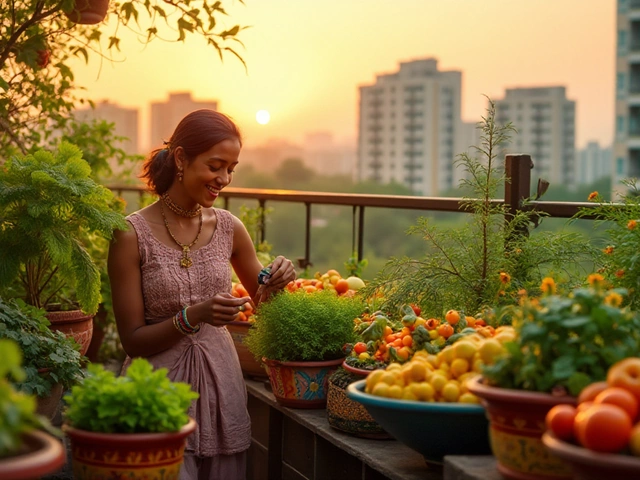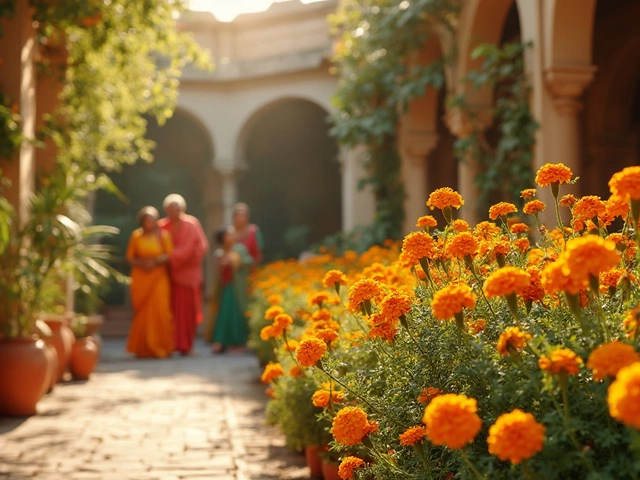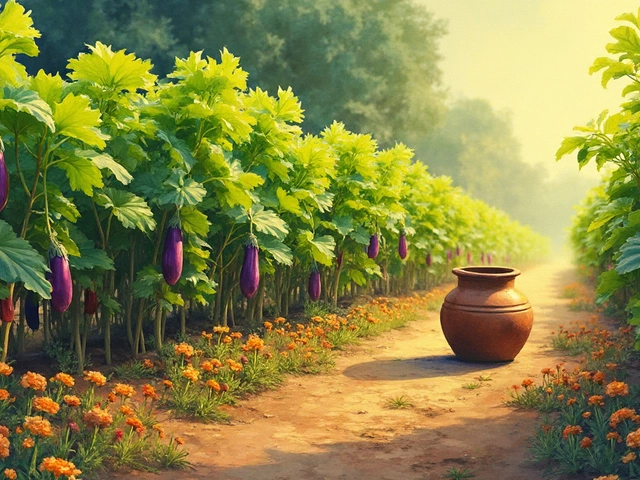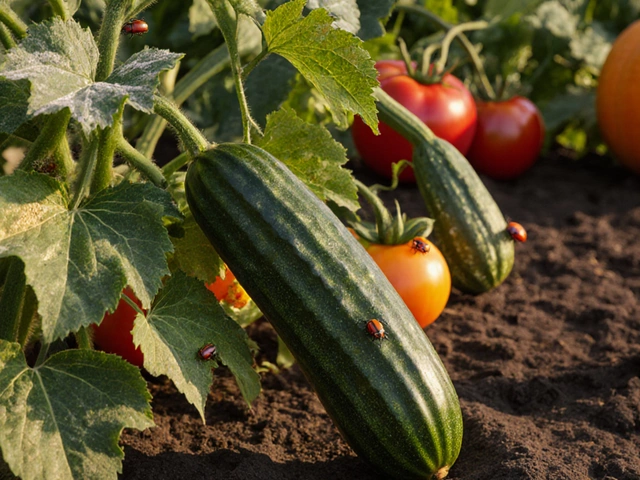You hear a lot of names thrown around for sustainable gardening. Ever wondered if there’s a better name for it, or if they all mean the same thing? People often use terms like ‘eco-friendly gardening,’ ‘organic gardening,’ or ‘regenerative gardening’ instead of just saying ‘sustainable.’ But each one has its own twist.
For example, permaculture is a buzzword you’ll see everywhere now. It’s about copying nature’s own systems to keep the soil, water, and plants healthy for the long run. Then there’s low-impact or green gardening—both focus on cutting chemical use and supporting local wildlife.
Knowing the right term can actually help you find the exact tips or advice you need. If you look up ‘native plant gardening,’ you’ll get advice that pairs perfectly with your local climate and soil. That means less water and worry for you.
- Popular Names for Sustainable Gardening
- What Sets Each Style Apart?
- Helpful Tips for Home Gardens
- Mistakes to Avoid
Popular Names for Sustainable Gardening
If you look around at gardening blogs, books, and even plant nurseries, you’ll spot a bunch of different names for what’s basically the same big idea—taking care of your garden in a way that’s good for the earth. People might call it sustainable gardening, but you’ll see these other names a lot:
- Eco-friendly gardening – This is for folks who want their yard or veggies to help the planet, not hurt it. It covers everything from using less water to skipping chemicals.
- Organic gardening – Think "no chemical fertilizers, no pesticides." Going organic is super popular for food gardens, but people use it for flowers and lawns too.
- Permaculture – A fancy word, but it just means copying nature’s patterns and cycles so your garden supports itself over time. It’s a full system, not just a style.
- Regenerative gardening – This takes things up a notch. The goal isn’t only to "do no harm"—it’s actually about fixing damaged soil and bringing wildlife back.
- Natural gardening – Go with the flow, plant what likes your climate, and let nature work.
- Native plant gardening – Plant only what already grows well in your area. This saves water and supports local bugs and birds.
- Green gardening – Usually means the same as eco-friendly, but some companies use it as a catch-all for "good for the planet."
These terms sometimes get tossed around like they mean exactly the same thing, but they don’t always line up. For example, organic gardening is always sustainable, but not every sustainable garden is certified organic.
Check out this quick table to see how these names stack up on common earth-friendly features:
| Name | No Chemicals | Uses Native Plants | Improves Soil | Supports Wildlife |
|---|---|---|---|---|
| Eco-friendly gardening | Usually | Sometimes | Sometimes | Often |
| Organic gardening | Always | Seldom | Often | Seldom |
| Permaculture | Always | Often | Always | Always |
| Regenerative gardening | Always | Often | Always | Always |
| Natural gardening | Usually | Often | Often | Often |
| Native plant gardening | Usually | Always | Sometimes | Usually |
| Green gardening | Usually | Sometimes | Sometimes | Sometimes |
Don’t be surprised if you see a community garden calling itself organic, and another one saying it’s going for permaculture, but both have similar plant beds and compost piles. The labels matter less than the eco-friendly steps you actually take in your own backyard.
What Sets Each Style Apart?
Not all green gardening approaches are made equal. Each style in sustainable gardening takes its own route—knowing these differences saves time, money, and even headaches.
Sustainable gardening is the umbrella term for any garden that gives back more than it takes. But let’s break down the big players:
- Organic gardening: All about skipping synthetic chemicals. Organic gardeners lean on compost, natural fertilizers, and old-school methods. You’ll see lots of companion planting, mulch, and pest control based on bugs instead of sprays.
- Permaculture: Takes things up a notch and tries to mimic natural ecosystems. Think layers of plants, smart water use, and recycled garden waste. Permaculture zones yard space by usage—so herbs go close to your door, fruit trees farther out. It’s detailed but super efficient in the long haul.
- Regenerative gardening: Goes beyond just not harming nature—it looks to fix damage that’s already been done. Soil is king here; you add organic matter, plant cover crops, and rarely dig, which helps carbon stay in the ground.
- Eco-friendly gardening: Focuses on shrinking your footprint by using less water, growing native plants, or adding pollinator-friendly flowers. It’s more about small, smart changes than following strict rules.
Take a look at how these styles differ in some key areas:
| Style | Main Goal | Common Techniques | Typical Focus |
|---|---|---|---|
| Organic | No synthetic chemicals | Compost, crop rotation, natural pest control | Soil and plant health |
| Permaculture | Self-sustaining system | Layered planting, integrated animals, water catchment | Long-term balance |
| Regenerative | Restore ecosystems | No-till, cover crops, biodiversity | Building soil, carbon capture |
| Eco-friendly | Reduce impact | Native plants, rain barrels, pollinator gardens | Resource savings |
One cool stat: a 2023 survey found home gardens with native plants used 35% less water than traditional lawns. That’s both money and effort saved—all by picking the right style for your yard. No matter what you call it, the right approach comes down to your goals and what you value most in your green space.
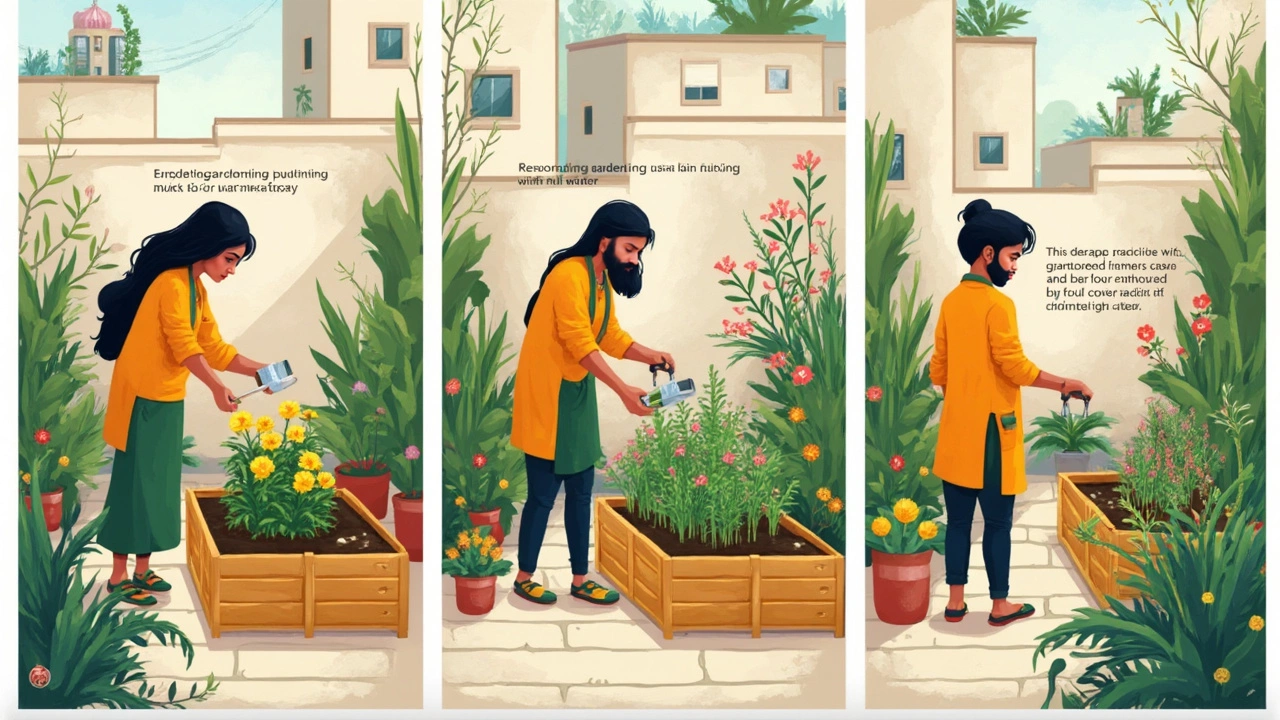
Helpful Tips for Home Gardens
If you want your garden to be truly sustainable, start by getting the basics right. Healthy soil is the foundation. Add compost instead of chemical fertilizers—compost gives steady nutrients and helps the soil hold water. Mulch is your next best friend; it locks in moisture, keeps weeds away, and eventually breaks down to feed your plants.
Pick the right plants for your area. Native plants usually need less water and deal with local bugs better than exotic types. This cuts down your time and cost—and you avoid nasty pesticides.
When watering, skip sprinklers and go for drip lines or soaker hoses. These tools send water straight to the roots, saving water and money. And if rain barrels are legal where you live, set one up to collect rainwater for free garden irrigation. In places like California, you could save around 1,300 gallons of treated water every summer just by using a 50-gallon rain barrel.
Rotate what you grow. Don’t plant the same crops in the same spot year after year—that just invites pests and diseases. Try a simple system where you move your veggies around each season to keep bugs guessing and soil healthy.
- Start small. A garden that’s too big is hard to care for—and you’ll get overwhelmed.
- Skip chemical weed killers. Instead, pull weeds or use a thick layer of mulch.
- If you’re growing food, go organic where you can, especially for crops you eat fresh like lettuce and tomatoes.
- Invite pollinators by planting flowers like lavender, sunflowers, or coneflowers between your veggies.
| Tip | Average Savings Per Year |
|---|---|
| DIY Composting | $60–$100 on soil amendments |
| Rainwater Harvesting (50-gal Barrel) | 1,300 gallons of water |
| Switch to Native Plants | Up to 50% less water use |
| Use of Drip Irrigation | 30–50% less water waste |
Don’t forget: sustainable gardening is all about stacking these little habits over time. Even small changes to your daily routine can make your garden greener, cheaper, and way less work.
Mistakes to Avoid
Switching to sustainable gardening sounds simple, but a few common errors can set you back fast. Plenty of people see cool eco-gardens on Instagram, try to copy them, and still end up wasting water, money, or time. Let’s break down the biggest blunders you’ll want to dodge.
- Ignoring Your Local Climate: Planting exotic species or bargain-bin plants might look good on day one, but they often fail if they aren’t suited to your local weather and soil. Native plants almost always need less water and maintenance.
- Overusing Organic Products: Just because something’s labeled "organic" doesn’t mean you should dump it everywhere. Too much compost, natural fertilizer, or mulch can suffocate roots or run off into local streams. Moderation beats overkill every time.
- Overwatering: More water is not always better. In fact, the EPA reported that about 50% of outdoor residential water is wasted due to inefficient watering. Stick a finger into the soil: if it feels moist, skip the hose that day.
- Skipping Soil Health: People go all in on plants but forget to look after their soil. Healthy soil is loaded with life—tiny bugs and fungi you can’t see without a microscope. Avoid digging too much or using harsh fertilizers, both of which can wipe out that ecosystem.
- Not Attracting Pollinators: A lot of gardeners forget bees and butterflies. No pollinators, no fruit. Simple as that. Most native flowering plants will attract them and boost your yields.
Here’s a quick glance at some numbers that highlight the impact of these mistakes:
| Mistake | Negative Outcome | Data/Stat |
|---|---|---|
| Overwatering | Water waste, root rot | EPA: 50% residential irrigation wasted |
| Non-native plants | Plant failure, extra maintenance | Native plants use 83% less water (USGS) |
| Ignoring soil | Poor plant health, low yields | Healthy soil = 7x more earthworms (Soil Sci. Soc. Am.) |
Stick with your local plants, watch your watering, and feed your soil, not just your plants. Pay attention, make small changes, and your garden will pretty much take care of itself.

